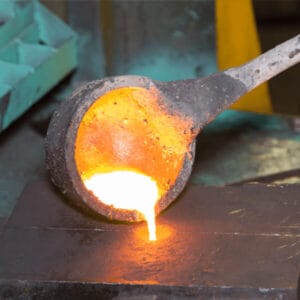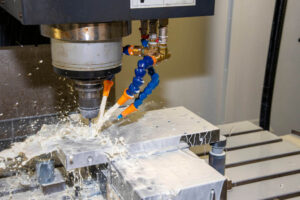Surface roughness is a standard to measure the surface quality of parts, which has different degrees of influence on the beauty of parts, contact surface friction, sealing of mating surfaces, fatigue strength of rotating parts, etc. For parts, whether the surface roughness is defective or not seriously affects the final quality.
However, in the actual metal processing process, the surface roughness of the parts will be defective due to various reasons such as tools, technology, and lubrication. The roughness of the parts cannot meet the requirements, which may lead to the need for further grinding of the parts, thereby prolonging the delivery time of the parts.
In this article, we’ll take you through the factors that can lead to imperfections in the surface finish of a part.
Knife mark defect
Rough tool mark defects are generally reflected when the cutting feed rate is increased, mainly because during the cutting process, due to the shape of the tool, part of the metal on the metal processing surface is not removed and remains on the processed surface, which is usually called tool marks.
Scale phenomenon
Generally, when the cutting speed is low, and high-speed steel or cemented carbide tools are used to cut plastic metal materials, it is easy to appear scaly cracks and burrs on the surface. This phenomenon is called scale phenomenon. Generally, this situation is easy to occur during broaching, slotting, hobbing and other processing processes. When cutting plastic materials at a low speed and with a small rake angle, the chip will be squeezed, which will cause the force between the tool and the chip to change periodically, which will cause metal accumulation and fracture on the machined surface and scabies.
Scratch and pull
Scratches and naps are also common in the category of roughness defects. Teeth gnawing during gear processing, napping in grinding, etc., are representative phenomena of scratches and naps. And we can analyze their causes according to the traces of scratches and hair pulling, in order to formulate elimination measures.
Uneven knives
Regarding the phenomenon of uneven cutting, the main reason lies in the machine tool, and the main performance is that the cutting marks of the cutting tool on the metal surface are uneven.
Vibration
During metal processing, the entire process system will vibrate accordingly, and machine tools, cutting tools, and workpieces will have a great impact on the surface roughness of metal parts. Among them, the low-frequency vibration of the process system generally produces waviness on the surface of the workpiece, while the vibration pattern produced by the high-frequency vibration of the process system belongs to the category of roughness. The vibration of the process system mainly includes forced vibration and self-excited vibration. Forced vibration is the vibration caused by the action of periodic external force. Self-excited vibration is the vibration excited by the system itself, and the most common self-excited vibration is cutting self-vibration.
Hope the above content can help you!




